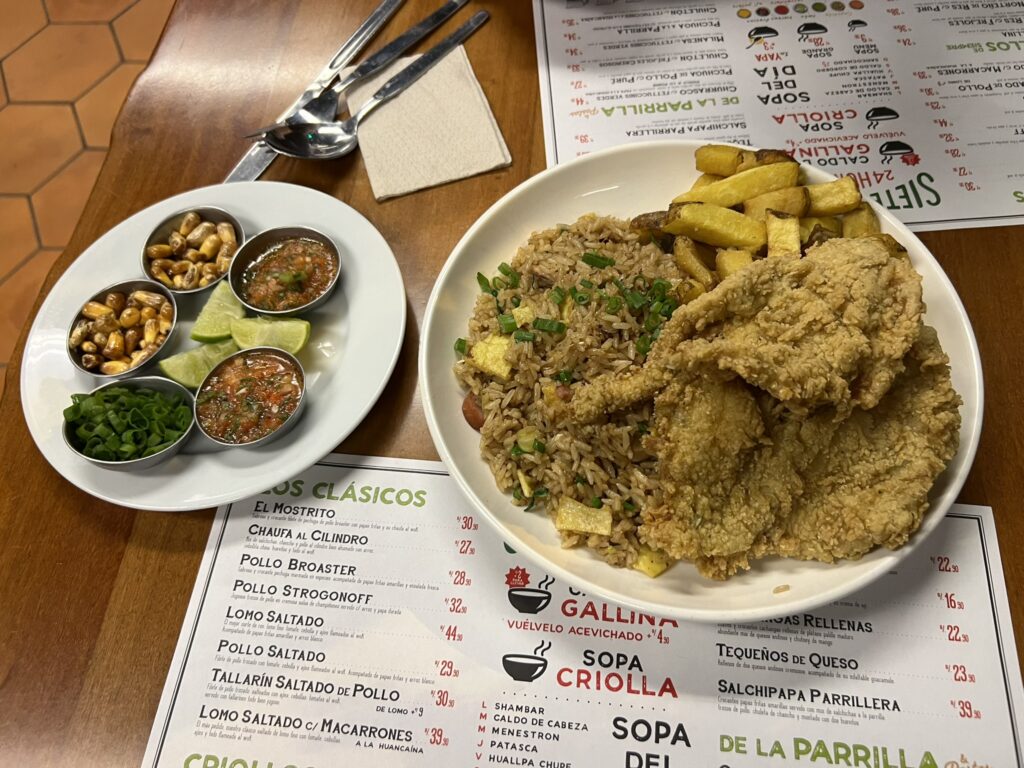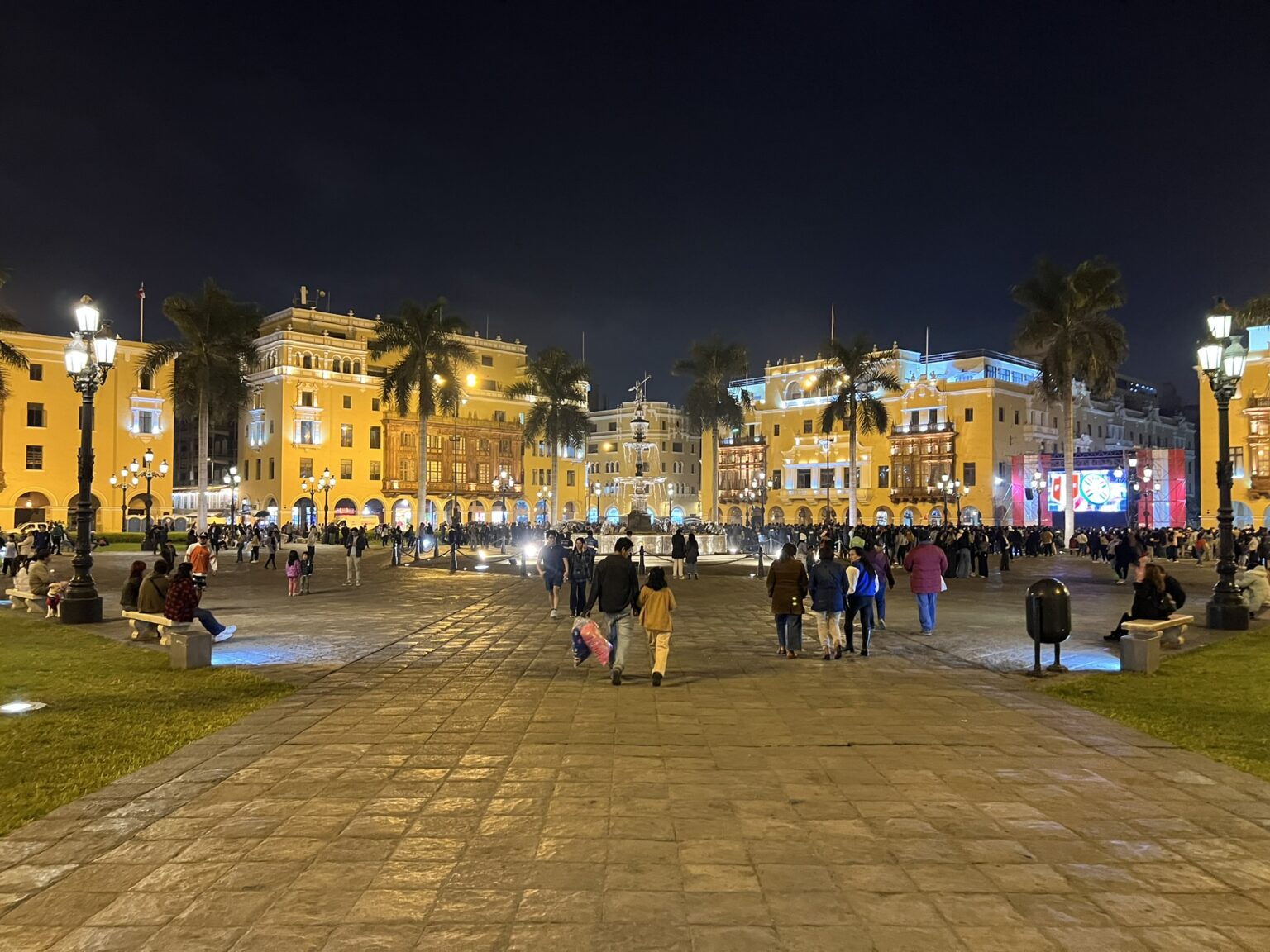Lima, Peru is the capital city of the country and home to nearly 11 million people, about 1/3 of the country’s population. We visited to try out its award-winning restaurants and learn more about Peru’s history.
Best Thing I Ate This Week
Trucha y El Aji at Maido
In Japan, they use the term “Nikkei” to refer to people of Japanese descent living in other countries. In Peru, they adopted the term Nikkei cuisine to refer to a unique blend of Japanese and Peruvian culinary methods and ingredients made world famous in Lima, Peru. The first Japanese immigrants came to Peru near the end of the 19th century but it wasn’t until much later that this cuisine name was adopted to describe the combination of the two cultures’ cooking. Many credit the restaurant Matseui for blazing the trail for Nikkei cuisine in the 1990s and today it is still a popular dining destination 30 years later.
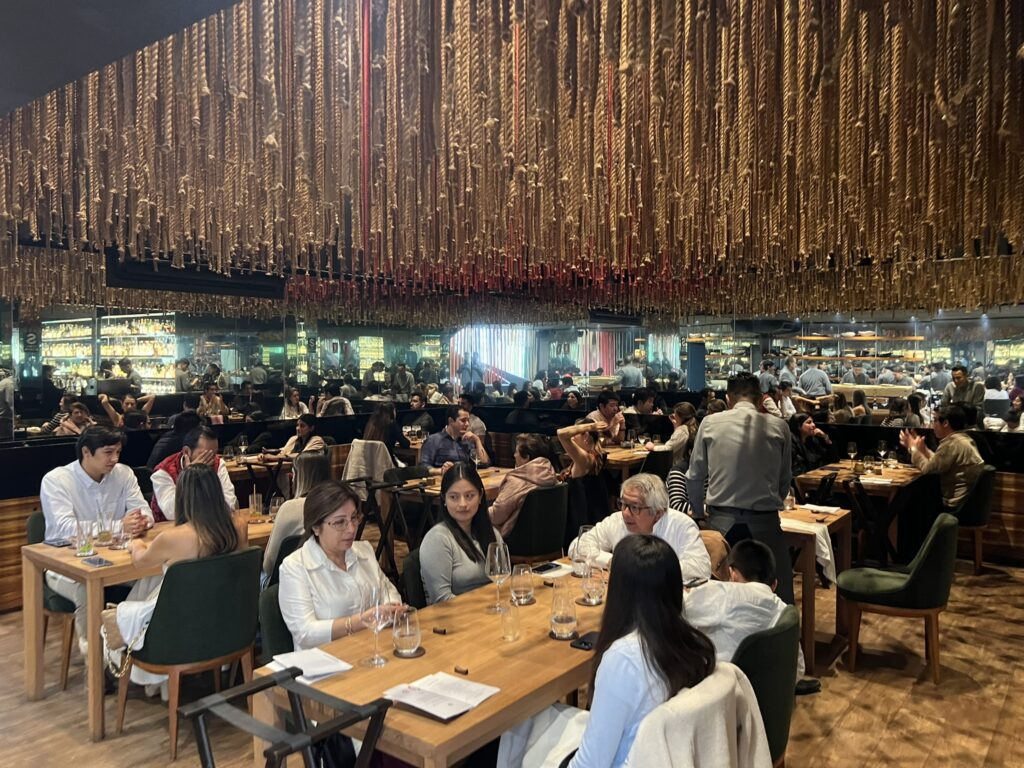
If you ask most people what is the best Nikkei restaurant they will tell you it is Maido. According to the World’s 50 Best Restaurants 2024 ranking, it is also the 5th best restaurant in the world and the top-rated restaurant in Latin America. The entire time we were in Lima, Peru, it was fully booked, but we decided to stop in to ask them about the potential for walk-in availability. They advised us to come right before opening, and the day we followed their advice, we were able to secure a much coveted weekend lunch table.
The interior of the restaurant is beautiful, with a hanging rope ceiling above the dining room and a sushi counter where the chefs work meticulously on their beautiful dishes. Every diner is greeted with a hearty “maido” by the team which means welcome in Japanese. The restaurant is celebrating its 15th anniversary and promotes the unique fusion of Peruvian Nikkei cuisine.
Every dish that we tried was an incredible combination of flavors that I had not previously tried together before. It truly did blend what I knew of Peruvian and Japanese traditional cuisine and techniques into something unlike anything else in the world. The presentation of the dishes was elevated and all of the plateware contributed to the overall enjoyment of the menu items. The servers were welcoming and knowledgeable, adding to a top dining experience.
It is hard to pick the best dish from our lunch but the Trucha y El Aji stood out as the most memorable for taste and presentation. The trucha (trout) sashimi was presented in the middle of a beautiful clam-shaped plate. Then, the server poured the typical leche de tigre sauce found on ceviches on top of the fish. However, the sauce had been frozen with nitrogen and was in powder form that melted once it was on the plate. This presentation and the incredible flavors made this one an unforgettable dish.
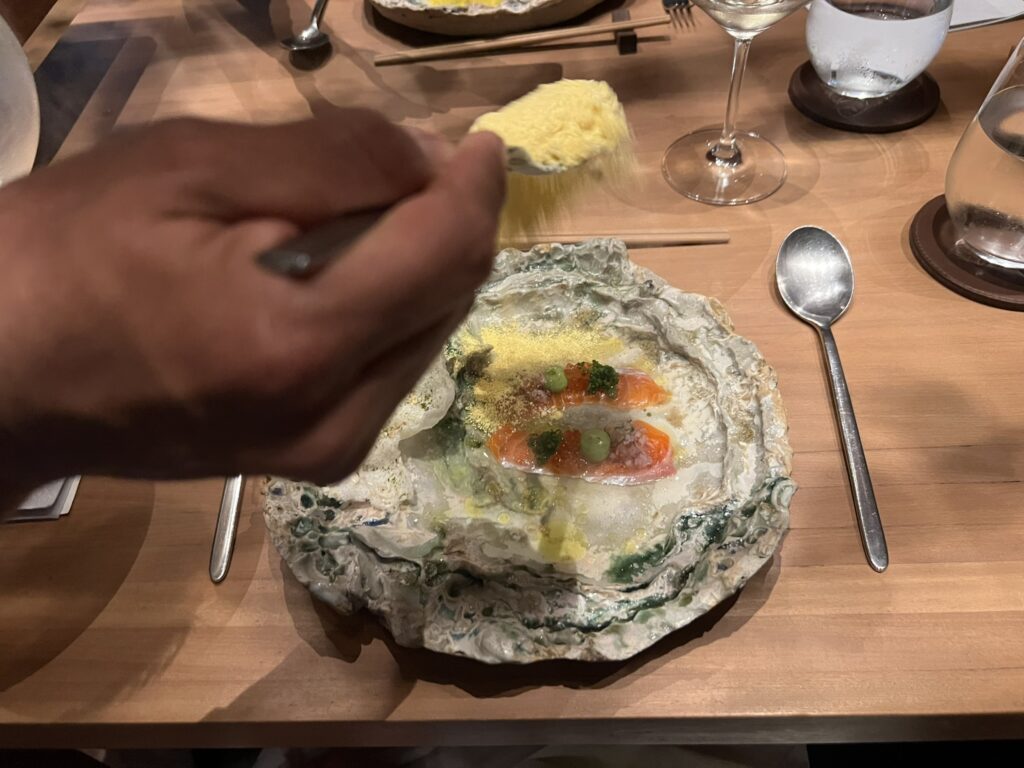
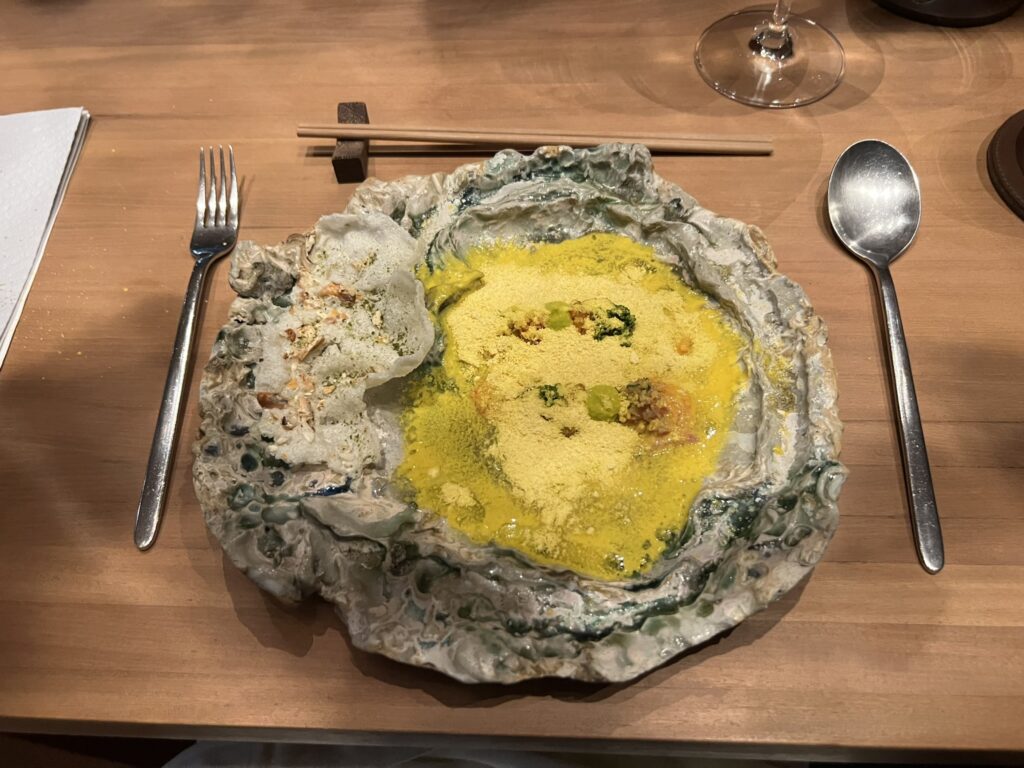
An Interesting Fact I Learned
Peru was one of the six cradles of civilization
Museo de Larco is a top tourist attraction in Lima, Peru and exhibits the largest collection of pre-hispanic artifacts, some dating back more than 5000 years. It is a private museum that was founded by Rafael Larco Hoyle who was a famous archaeologist, responsible for finding many of the artifacts on display today. A paid guided tour is available at the museum in Spanish at the top of every hour and in English every hour at the half hour. We decided to take the tour and our guide’s knowledge helped provide context to the differences among the ancient civilizations and how they changed over the years.
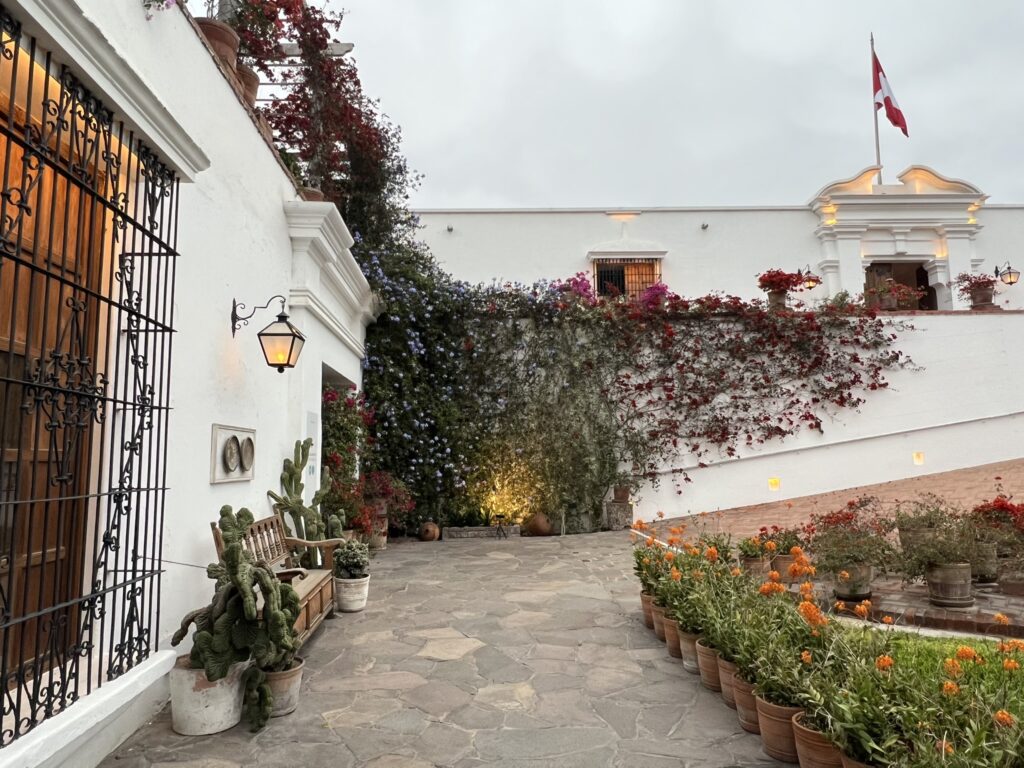
While on the tour, our guide explained to us that Peru was one of the six cradles of civilization. This included Mesopotamia, Ancient Egypt, Ancient India, Ancient China, Ancient Peru, and Ancient Mesoamerica. These were important places that developed independently of any others. In 1950, Rafael Larco Hoyle presented the first summary of the 7 Peruvian Epochs and the groups living in Peru during each of those periods across the north coast, central coast, southern coast, and mountain regions. The tour gave additional perspective to the ancient ruins we experienced throughout the Andes mountains and made us want to visit new ones that we learned about on the south and north coasts.
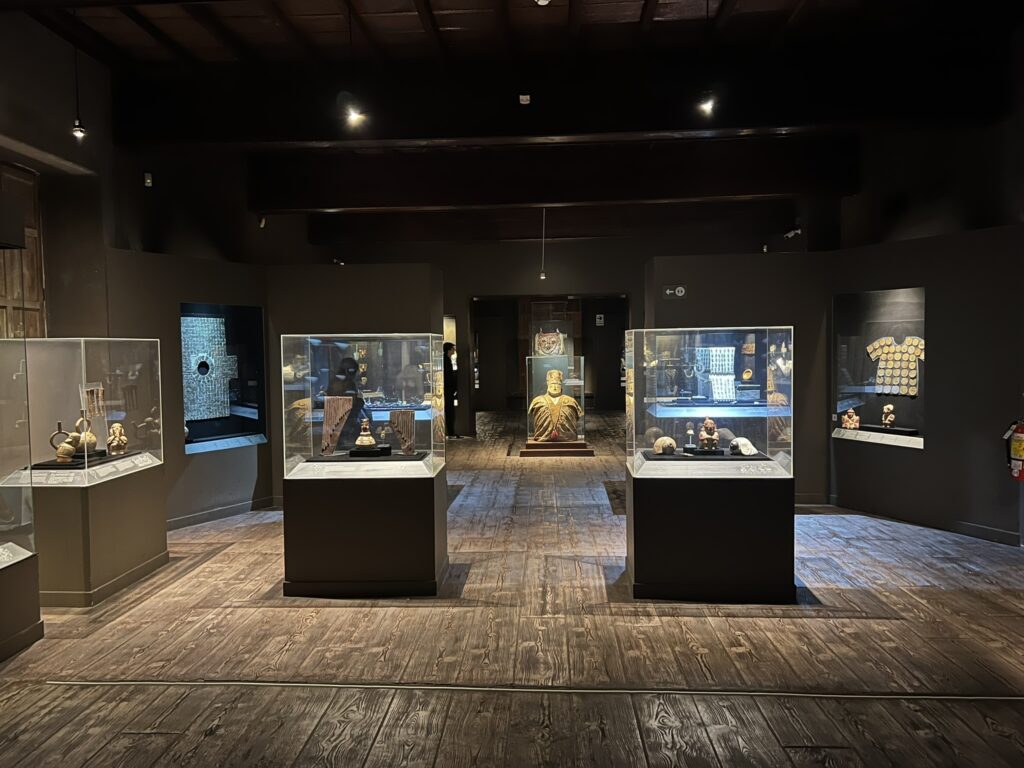
Highlights of the tour included seeing intricate stone sculptures, beautiful ceramics, incredible weavings, important ceremonial objects, and amazing jewelry all while learning more about which ages they were from. At the end of the tour of the main permanent exhibit, our guide included two more stops in the museum. One was the storage wing, which is one of the few museums in the world that allows visitors to walk through their storage area. This display shows the quantity of artifacts produced by these ancient groups that are then studied and curated throughout the museum for our education. The second was an erotic gallery that displays the way that these civilizations viewed the importance of sex, fertility, and love in their lives. They were not made for pornographic purposes but rather to highlight the symbiotic nature of life. These ceramics were so important that they even were found buried alongside remains.
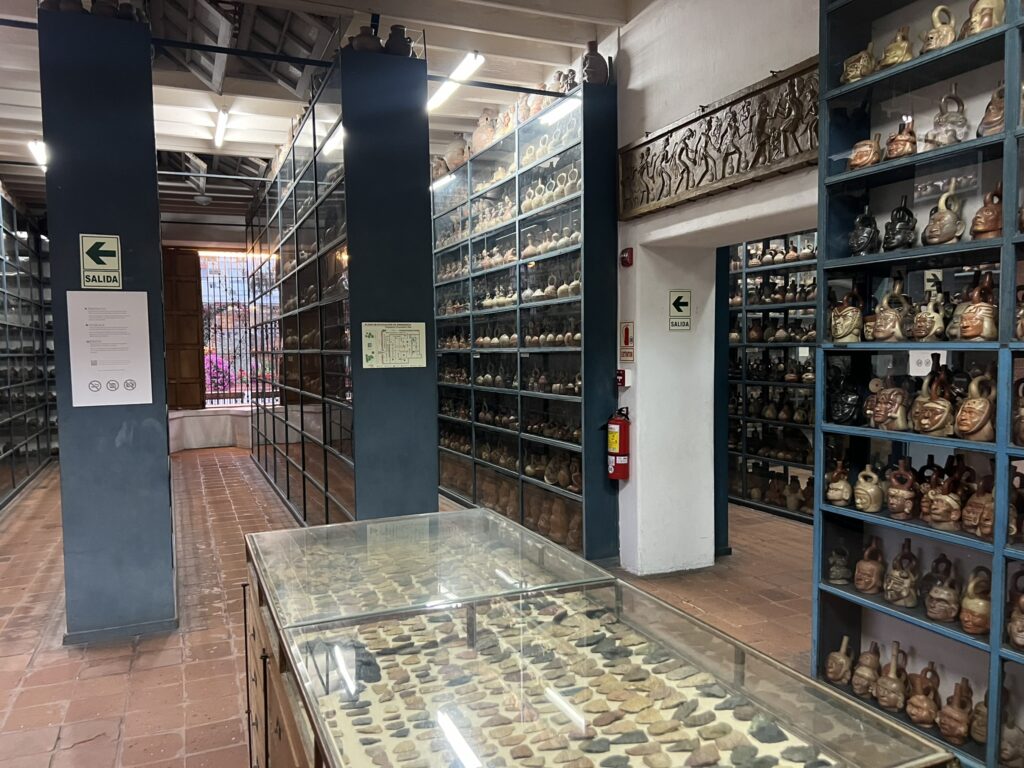
My Travel Tip of the Week
Don’t be afraid to visit other parts of Lima, Peru beyond Miraflores
Miraflores is the most popular neighborhood for tourists when visiting Lima, Peru. It has beautiful parks overlooking the Pacific Ocean, easy access to surfing, great local markets, top dining establishments, and quality places to stay. At most hours of the day, there are plenty of people walking around and it is close to the Javier Prado bus station. Additionally, Miraflores is within walking distance of Barranco and San Isidro, two other wonderful neighborhoods worth visiting.
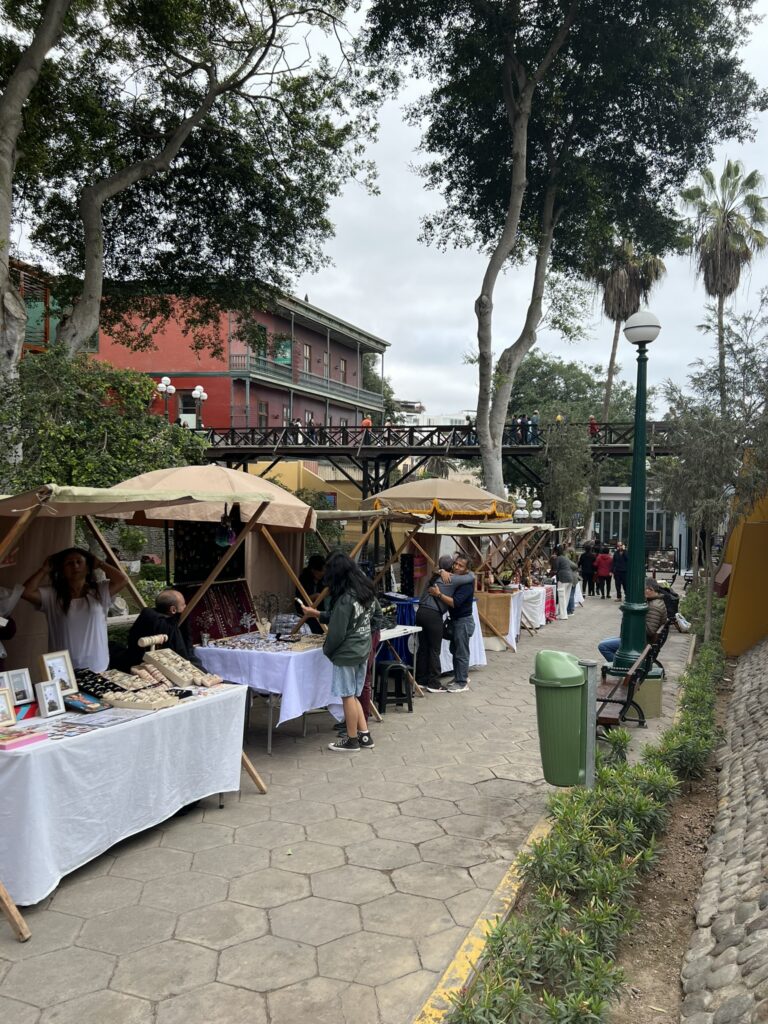
Barranco is a nice walk south from Miraflores along parks that overlook large cliffs and the Pacific Ocean. This neighborhood is known for its street art which is popular with the bohemian crowd. One of its main attractions is the Puente de Suspiros, and, while wandering the neighborhood, there are great local spots to stop such as Isolina Taberna Peruana for traditional Peruvian food or Juanito de Barranco for great pisco sours.
San Isidro is a nice walk north of Miraflores and is regarded as the most upscale neighborhood in Lima, Peru. It has the tranquil Parque El Olivar de San Isidro, top shopping, and some of the most famous restaurants and bars in Peru. It is perfect for an afternoon of peace and indulging in higher-end experiences.
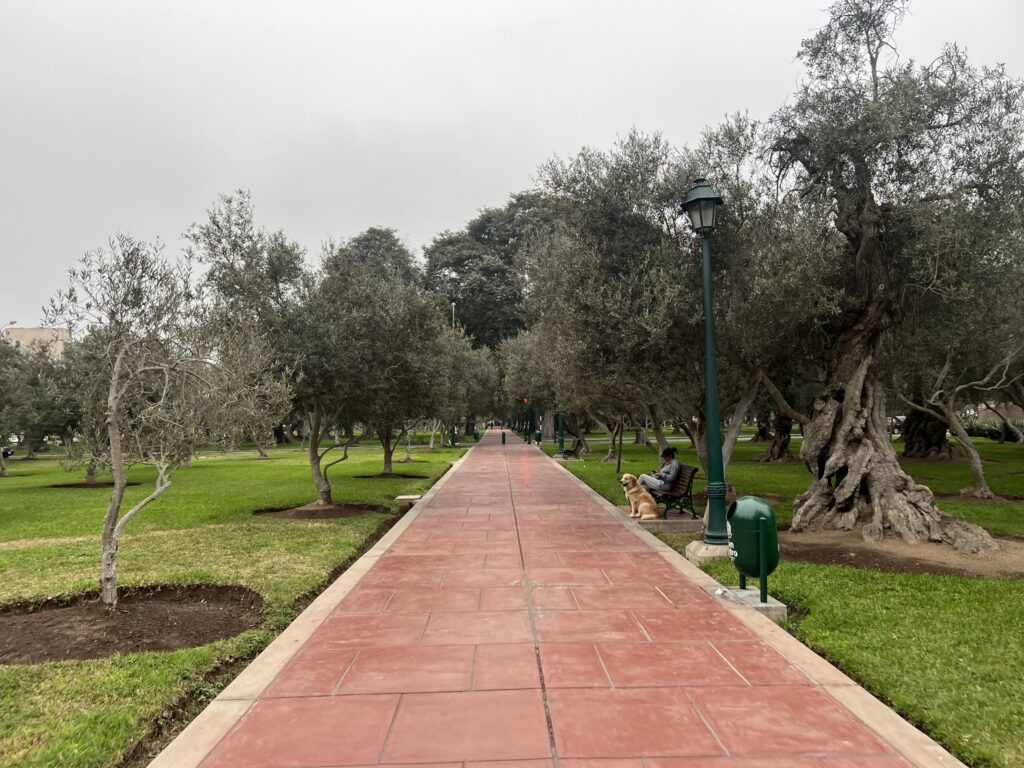
Outside of these neighborhoods, there are still plenty of places for tourists to visit. Pueblo Libre has the Museo Larco, Centro Historico is great for a walking tour to understand Lima’s colonial history, Barrio Chino is the perfect place to try Chifa cuisine, and near La Victoria there is Circuito Magico del Agua for a family fun night. Although we had heard Lima, Peru was dangerous, we felt that, by following the local recommendations, we were able to visit all of these neighborhoods without worries. There were likely even more great places to visit in this amazing city but we ran out of time to keep exploring.
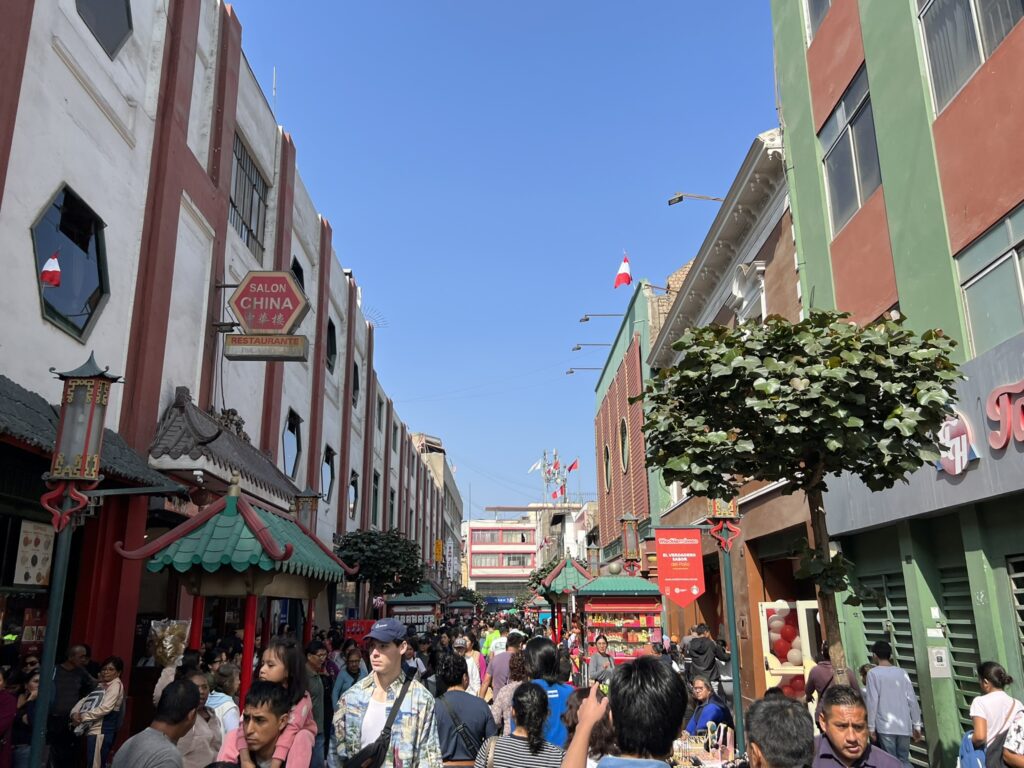
My Additional Anecdote This Week
Lima’s dining scene is one of the best in the world
In 2023, Central was named as the top restaurant in the world by the World’s 50 Best Restaurants. While this list is known to be highly subjective, it was still a major milestone for the city of Lima to have the first restaurant in South America to claim this title, a woman chef leading the restaurant, and the cuisine to be rooted in Peruvian ingredients and cooking techniques. While we did not have the chance to dine at Central while in Lima, Peru, we had the opportunity to dine at other highly recognized and local restaurants that stood out. Below are a few of the examples that helped us understand why Lima’s dining scene is one of the world’s best.
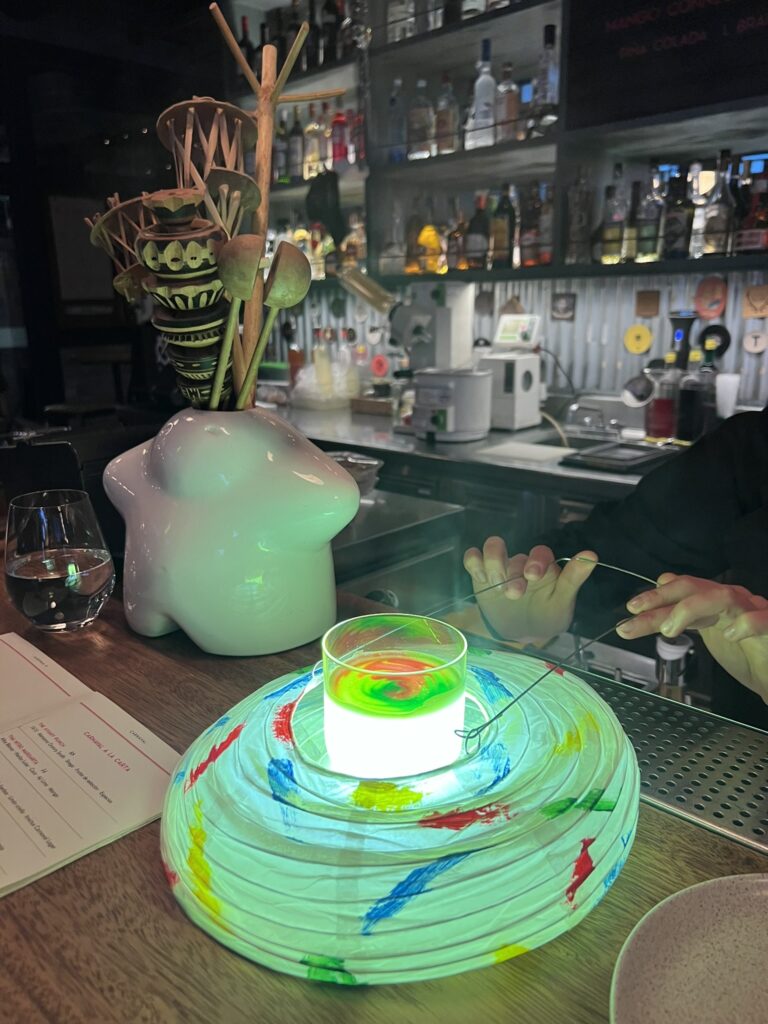
- Maido: an incredible high-end Nikkei restaurant that makes you feel welcome but blows you away with Umami flavors
- Carnaval: an innovative cocktail bar that leverages its own ice room to make cocktails unlike anywhere else
- Astrid y Gaston: set in an exquisite old mansion, this restaurant put Lima on the map with its Peruvian dishes
- Siete Sopas: 24-hour eatery that always seems to have a line of locals waiting to eat popular comfort food
- Chifa Wa Lok: generous-sized portions of the unique blend of Cantonese and Peruvian cuisines, great for group lunch
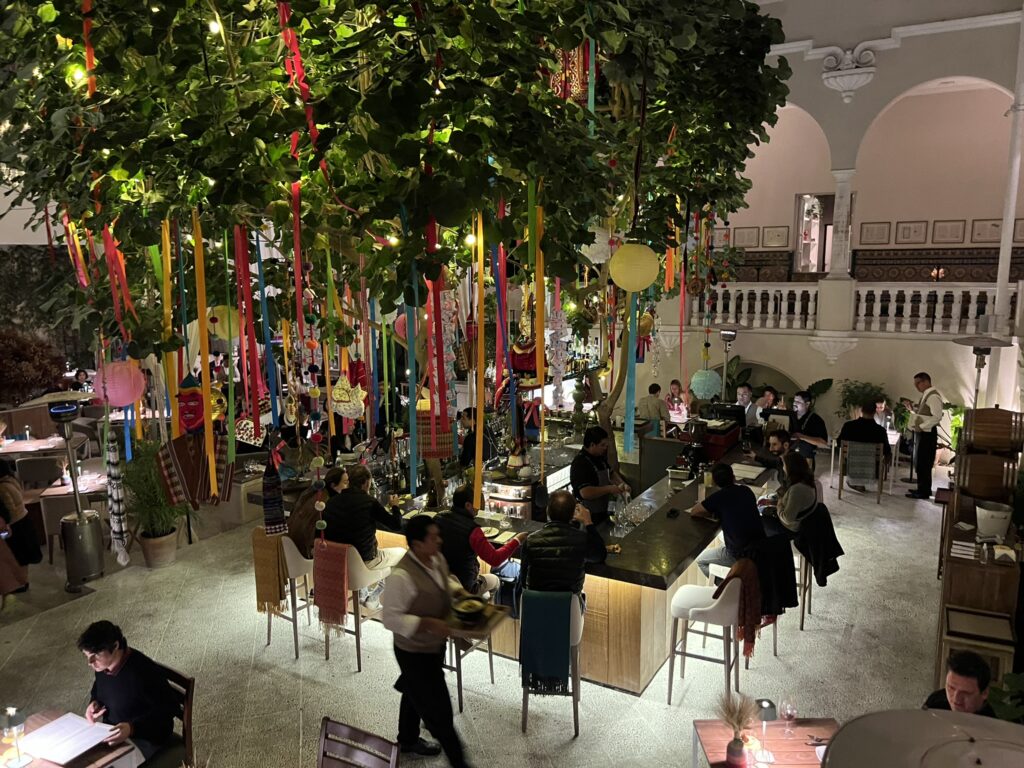
There were many other restaurants and bars we visited that stood out and so many more that we did not have time to visit. Given the unique combination of flavors and top-tier cooking techniques, Lima, Peru is one of the best dining destinations I have ever visited.
